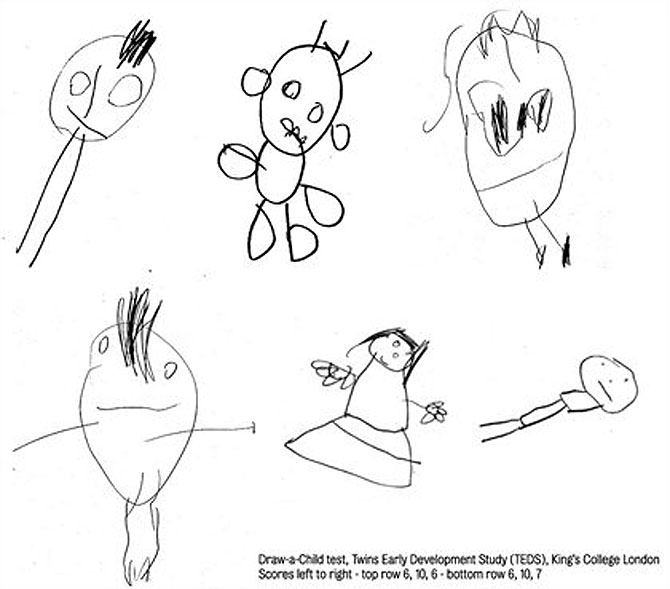TORONTO – New research published Tuesday suggests there is a correlation between how four-year-old children draw and their intelligence a decade later.

Researchers from King’s College London studied more than 7,700 pairs of twins (both identical and non-identical), asking children to draw a picture of a child (aka the “Draw-a-Child’ test). Each drawing was scored from zero to 12, depending on how it depicted features like the head, ears, nose, mouth, hair, body, limbs and so on. Researchers looked to see if the correct features were present, and in the correct quantity (i.e. two eyes, one nose).

What they found was that children who scored higher on the drawing test at age four were moderately associated with higher scores of intelligence at age 14.
“The Draw-a-Child test was devised in the 1920s to assess children’s intelligence, so the fact that the test correlated with intelligence at age four was expected,” said lead author Dr. Rosalind Arden. “What surprised us was that it correlated with intelligence a decade later.”
But if your kid’s drawing abilities are a far cry from da Vinci, should you be worried?
No, said Arden.
- Life in the forest: How Stanley Park’s longest resident survived a changing landscape
- ‘They knew’: Victims of sexual abuse by Ontario youth leader sue Anglican Church
- Roll Up To Win? Tim Hortons says $55K boat win email was ‘human error’
- Carbon rebate labelling in bank deposits fuelling confusion, minister says
“Drawing ability does not determine intelligence, there are countless factors, both genetic and environmental, which affect intelligence in later life,” she said.
Arden said drawing is an ancient behaviour where people attempt to show someone else what is in our mind.
“This capacity to reproduce figures is a uniquely human ability and a sign of cognitive ability, in a similar way to writing, which transformed the human species’ ability to store information, and build a civilization.”
Researchers said genes played a role in the correlation they observed, as identical twins’ drawings were more similar to each other than the drawings from the non-identical twins. But this doesn’t mean there is a “drawing gene,” Arden said.
“A child’s ability to draw stems from many other abilities, such as observing, holding a pencil etc. We are a long way off understanding how genes influence all these different types of behaviour.” said.
The research was published Tuesday in Psychological Science.



Comments